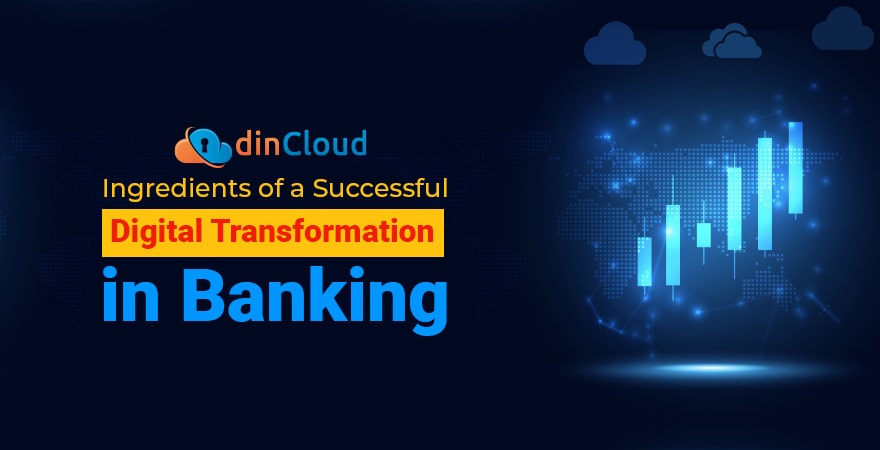When we talk of the impact of the Covid-19 pandemic, it varies across different industries and sectors. Still, we can broadly classify this impact into either the essential services or the optional ones, which do not pose a disruption to our daily lives.

So far as the banking and financial sector is concerned, it surely classifies as an essential component of our daily lives. Whether before, during or after the pandemic, banking and financial services continue to play a pivotal role in our day to day lives.
However, the pandemic completely changed the way most of us conducted banking. Now, nearly all of banking has gone digital and banks that do not take a proactive approach towards digital transformation will soon be facing extinction.
Related: State of Digital Transformation
Leadership and Culture
To pull off a successful digital transformation, the first thing that is required is a major shift in the organizational culture. This change has to originate from the top management and trickle down right to the lowest tier of the banking or financial institution.
A major cultural change is required across the organization, as digital transformation has to challenge the status quo to bear the desired fruits. It is possible only via cultural change that a major overhaul of banking processes can be achieved.
Consumer Experience
The post pandemic banking consumer has started expecting a lot now. Foremost is the availability of most, if not all, banking services via digital channels. Now, banks will have to provide exceptional customer experiences to their account holders.
Initially, this expectation was limited to mostly e-banking or internet banking. After the pandemic however, there has been a tremendous increase in the use of smartphones for banking processes. So, banks will have to develop secure and capable banking apps.
Related: Going into 2021, Why Should Digital Transformation be a Top Priority?
Modern Technology Use
Today’s consumer expects a highly personalized experience via mobile banking apps. For this, banks need to keep tabs on the history and preferences of consumers. Then, they desire personalized product and service recommendations on the basis of this data.
Modern technologies such as Artificial Intelligence (AI) and automation need to be used to leverage the vast amounts of already available consumer data. The ability of banks to offer personalized and customized products or services will enhance profitability a lot.
Human Capital Development
This is perhaps the cornerstone of any digital transformation initiative, whether it’s a banking institution or otherwise. Over time, employees tend to get highly dependent on legacy processes that have been in vogue for years or maybe decades.
However, it is imperative that banks also invest in developing their in-house human resources. That way, they will be able to achieve a seamless digital transformation. This investment in human resources will also reduce their reliance on external vendors.
Related: What are the benefits of Digital Transformation?
Data Security, Compliance and Innovation
It is imperative to note that during this entire digital transformation phase, data security has to remain a top priority. The consumer data that is available with banks is of a very sensitive nature and a prized target for cyber miscreants.
Then, there is the element of meeting ever increasing regulatory and compliance standards when it comes to collecting as well as leveraging consumer data. All these elements need to be blended in the organizational culture that is driven by innovation.
Related: How to Navigate Digital Transformation Challenges in 2021?
Conclusion
The banking industry has evolved tremendously during the pandemic and this transition is still in process. Banking and other financial institutions need to adopt a proactive approach towards digital transformation to remain relevant and profitable in today’s world.
Please feel free to Contact dinCloud for best in class cloud solutions for your enterprise as well as individual needs.


